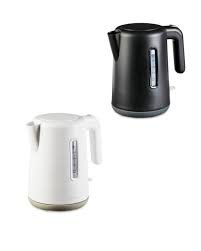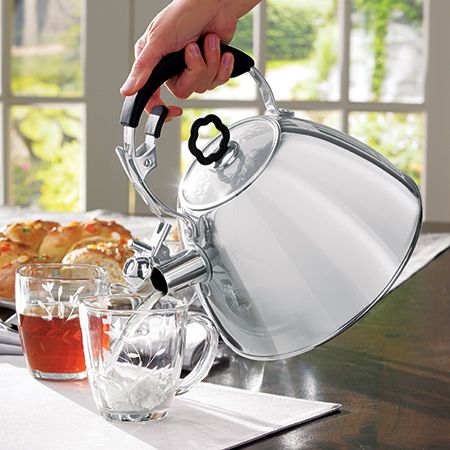Rust inside a kettle can be harmful if ingested and may affect the taste of water. Rust inside a kettle not only poses health risks if ingested but can also affect the taste of the water.
It’s important to address this issue promptly to avoid any potential health hazards. Rust can accumulate over time due to the exposure of metal to water, and if left unattended, it can deteriorate the quality of the water it holds.
We will discuss the potential dangers of rust inside a kettle, how to remove it, and preventive measures to ensure the safety and quality of your drinking water.
The Impact Of Rust Inside Kettles
When it comes to the impact of rust inside kettles, homeowners should be aware of the potential issues it can cause. Rust buildup inside kettles can have corrosive effects on water quality and may lead to potential health concerns if not addressed promptly.
Corrosive Effects On Water Quality
Rust inside a kettle can have corrosive effects on the quality of the water boiled in it. As the metal corrodes, it can leach into the water, impacting its taste and purity. Additionally, the presence of rust particles in the water can affect the overall aesthetics of beverages prepared using the kettle, giving them an undesirable appearance. This can lead to concerns about the safety and palatability of the water, prompting the need for proactive measures to address the issue.
Potential Health Concerns
The presence of rust inside a kettle raises potential health concerns for those consuming the water boiled in it. Consuming water contaminated with rust particles can lead to health issues, particularly for individuals with sensitivities or pre-existing conditions. These issues may include gastrointestinal discomfort or more serious health implications. As such, it’s crucial to prioritize the removal of rust and the maintenance of kettle integrity in order to mitigate any potential health risks associated with its presence.
Removing Rust From Kettles
If your kettle has fallen victim to rust, fret not. With the right methods, you can restore your kettle to its former glory, allowing you to enjoy a rust-free cup of tea or coffee. Let’s explore some effective ways to remove rust from kettles.
Gentle Abrasive Cleaning Methods
When it comes to removing rust from kettles, gentle abrasive cleaning methods can be highly effective. Baking soda and white vinegar are two common household items that can work wonders. Create a paste by mixing baking soda with vinegar and apply it to the rusty areas of the kettle. Let it sit for a few hours and then scrub the rust away with a soft-bristled brush. This method is gentle yet potent in combating rust without causing damage to the kettle’s surface.
Natural Cleaning Agents
Natural cleaning agents are a safe and eco-friendly way to remove rust from kettles. Lemon juice and salt can be combined to form a natural, acidic solution that effectively dissolves rust. Simply sprinkle salt over the rusted areas, squeeze lemon juice over the salt, and let it sit for a few hours. Afterward, use a scrubbing pad to gently remove the rust. The natural acidity of lemon juice, combined with the abrasive texture of salt, can help eliminate stubborn rust stains.
Preventing Rust Buildup In Kettles
Rust buildup inside kettles can be a common and frustrating issue, but with the right techniques, it is preventable. Proper drying methods and protective coatings are essential in keeping your kettle free from rust and maintaining its longevity. By implementing these preventive measures, you can ensure that your kettle remains in top condition, ready for use whenever you need it. Let’s explore these crucial methods in more detail.
Proper Drying Techniques
Ensuring that your kettle is thoroughly dried after each use is vital in preventing rust buildup. There are simple yet effective steps you can take to achieve proper drying:
- After washing, use a clean cloth to dry the kettle thoroughly, paying particular attention to any crevices where water may collect.
- Leave the kettle open and upside down to air dry completely before storing it away.
- Consider using a hair dryer on a low setting to ensure any remaining moisture is evaporated.
Protective Coatings And Treatments
Applying protective coatings and treatments to your kettle can offer an additional layer of defense against rust. Here are some methods to consider:
- Season the kettle: This traditional method involves coating the interior with a thin layer of oil and heating it to create a natural protective barrier.
- Use enamel or ceramic options: Opt for kettles with enamel or ceramic coating, as these materials provide a protective layer against rust and corrosion.
- Apply rust-resistant spray: Utilize specially formulated rust-resistant sprays to create a protective barrier on the interior of your kettle.

Credit: www.amazon.com
Extending Kettle Lifespan
Regular maintenance and monitoring of rust-prone areas play pivotal roles in extending the lifespan of your kettle. Rust inside a kettle not only deteriorates its appearance but also poses health risks due to the ingestion of rust particles. By implementing proper care and monitoring, you can prevent rust and prolong the functionality of your kettle.
Regular Maintenance Practices
Regular maintenance practices are essential for preventing rust formation within a kettle. Keep your kettle clean by rinsing it after each use and thoroughly drying it to prevent moisture build-up. Periodically inspect the interior for any signs of rust, and if detected, take immediate action to remove it using safe cleaning methods. Additionally, follow the manufacturer’s instructions for regular descaling to prevent mineral build-up, which can trigger rust formation.
Monitoring Rust Prone Areas
Monitoring the rust-prone areas of your kettle is crucial for detecting any early signs of corrosion. Specifically focus on the inner surface, base, and any metal joints or crevices. Use a flashlight to inspect these areas, paying close attention to spots with existing wear or scratches. If any discoloration or roughness is observed, it may indicate the onset of rust, prompting the need for immediate attention and cleaning to prevent further damage.
Frequently Asked Questions Of Rust Inside Kettle
Why Does Rust Form Inside A Kettle?
Rust forms inside a kettle due to the reaction between water and the iron in the kettle, leading to oxidation. This is more likely to occur if the kettle is left with water for extended periods.
Is It Safe To Use A Kettle With Rust Inside?
Using a kettle with rust inside is not recommended as it can affect the quality and taste of the water. Additionally, consumption of rust particles may pose health risks. It’s best to replace the kettle to ensure safety and avoid any potential health issues.
How To Prevent Rust Inside A Kettle?
To prevent rust inside a kettle, ensure it is thoroughly dried after each use to avoid prolonged exposure to moisture. Additionally, consider purchasing a stainless steel or ceramic kettle, which are less susceptible to rust formation.
Can Rust Inside A Kettle Be Cleaned?
Yes, rust inside a kettle can be cleaned using a mixture of vinegar and water, or a specially formulated kettle descaler. It’s important to follow the manufacturer’s guidelines and thoroughly rinse the kettle after cleaning. Regular maintenance can prevent rust from forming again.
Conclusion
Dealing with rust inside a kettle can be a hassle, but with the right methods, it’s manageable. Regular cleaning and proper maintenance are key to preventing rust buildup and ensuring a longer lifespan for your kettle. By following these tips, you can keep your kettle in top condition and enjoy clean, rust-free water for your beverages.




